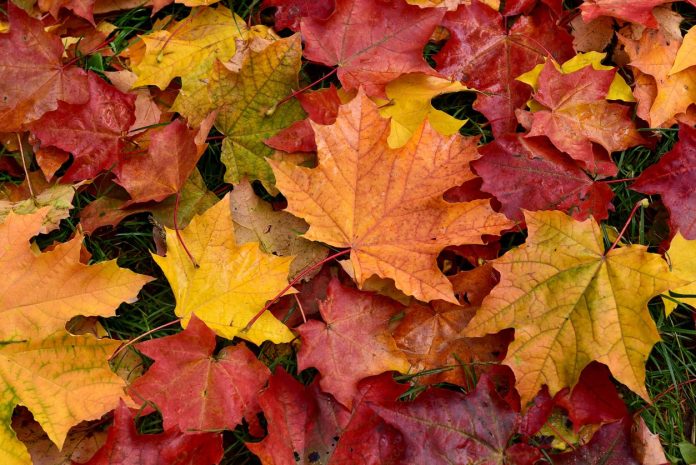Why do some plants change color with the seasons.
As the seasons change, we often witness a stunning transformation in the natural world. One of the most striking changes is the shift in plant colors, particularly the vivid display of autumn foliage. While it’s a beautiful spectacle, this seasonal color change is rooted in complex physiological and biochemical processes. In this article, we will explore the reasons behind this phenomenon, focusing on the roles of pigments, environmental triggers, and the evolutionary advantages these changes confer.
Table of Contents
ToggleThe Role of Pigments: Chlorophyll, Carotenoids, and Anthocyanins
Plant color is primarily determined by the presence and concentration of various pigments. The three main types of pigments involved in seasonal color changes are chlorophyll, carotenoids, and anthocyanins.
Chlorophyll: The Green Pigment
Chlorophyll is the pigment responsible for the green color in plants. It plays a crucial role in photosynthesis by absorbing light energy and converting it into chemical energy. During the growing season, chlorophyll is constantly produced and broken down, maintaining the green color of leaves. However, as days shorten and temperatures drop in autumn, chlorophyll production slows down and eventually stops. This allows other pigments to become more visible.
Carotenoids: Yellow and Orange Hues
Carotenoids are pigments that produce yellow, orange, and brown colors in plants. They are present in leaves throughout the growing season but are masked by the dominant green chlorophyll. When chlorophyll breaks down in the fall, carotenoids remain and become more visible, contributing to the brilliant yellows and oranges of autumn foliage.
Anthocyanins: Reds and Purples
Anthocyanins are pigments that produce red, purple, and blue colors. Unlike chlorophyll and carotenoids, anthocyanins are not always present in leaves but are produced in response to certain environmental conditions, such as increased sunlight and cool temperatures. They often appear in late summer and early fall, contributing to the red and purple hues seen in some plants.
Environmental Triggers: Light, Temperature, and Water
The changing colors of plants are influenced by several environmental factors, including light, temperature, and water availability. These factors affect the production and breakdown of pigments, leading to the seasonal color changes we observe.
Light
The amount of daylight decreases as autumn approaches, which triggers the breakdown of chlorophyll in leaves. Shorter days also signal plants to prepare for winter by slowing down their metabolic processes, including photosynthesis. This reduction in chlorophyll allows carotenoids and anthocyanins to become more prominent.
Temperature
Cooler temperatures in the fall further accelerate the breakdown of chlorophyll and influence the production of anthocyanins. Cold nights and warm, sunny days are ideal for the development of vibrant red and purple colors. However, an early frost can damage leaves and halt the color-changing process.
Water Availability
Water stress, caused by drought or reduced water availability, can also affect leaf color. During dry conditions, plants may begin to break down chlorophyll earlier than usual, leading to an earlier onset of fall colors. Conversely, excessive rain and cloudy days can lead to less vibrant colors, as the lack of sunlight reduces anthocyanin production.
Evolutionary Advantages: Survival and Reproduction
The seasonal color change in plants is not just a visual treat but also offers several evolutionary advantages. These changes can help plants survive adverse conditions and enhance their reproductive success.
Protection from UV Radiation
Anthocyanins, which contribute to red and purple colors, can provide protection against harmful UV radiation. By absorbing excess light, these pigments prevent damage to leaf tissues and chloroplasts, especially during periods of intense sunlight.
Deterrence of Herbivores
Brightly colored leaves may deter herbivores from feeding on them. Some studies suggest that the red coloration, in particular, signals toxicity or poor nutritional value to potential predators, thereby reducing the likelihood of being eaten.
Efficient Nutrient Reabsorption
As plants prepare for winter, they reabsorb valuable nutrients from their leaves before they are shed. The breakdown of chlorophyll and other pigments is part of this process, allowing the plant to conserve resources that will be needed for growth in the spring.
Attraction of Pollinators and Seed Dispersers
In some cases, the colorful display of leaves can attract pollinators or animals that help with seed dispersal. Brightly colored fruits and foliage can signal ripeness and availability, encouraging animals to assist in the plant’s reproductive process.
A Symphony of Seasonal Change
The seasonal color change in plants is a complex interplay of pigments, environmental factors, and evolutionary strategies. This natural phenomenon not only enhances the beauty of our surroundings but also plays a critical role in the survival and reproduction of plants. By understanding the science behind these changes, we can better appreciate the intricate mechanisms that drive the seasonal symphony of colors in the plant kingdom.








